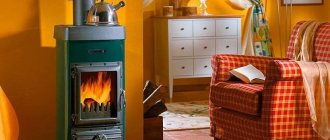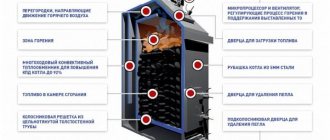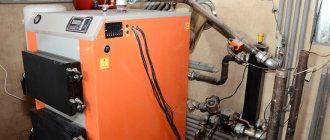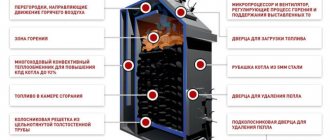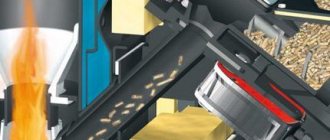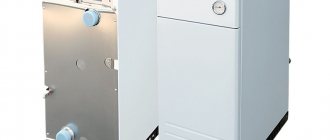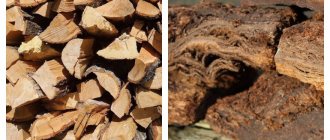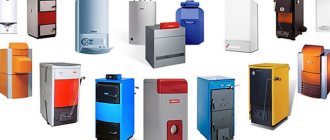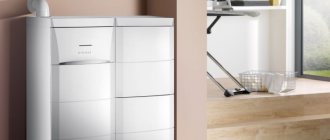Country houses cease to be just a relaxation area after exhausting work in the garden and turn into a real place to live for weekends or holidays. Therefore, heating a dacha with a boiler has become in demand and popular. At the same time, they buy equipment depending on the communications installed on the site (gas, electricity, water) and the area of the room itself. Consumers have to choose from several equipment options: gas, solid fuel, electric, liquefied gas and liquid fuel.
The principle of operation of heating in the country
You should not confuse concepts such as a residential cottage and a summer house, since the latter building usually serves exclusively as a place of recreation and not permanent residence. If we talk specifically about heating, a country house has the following features:
- Almost all country houses do not have access to a gas main, which explains the need to install a different type of heating. This is why gas boilers for summer cottages are used much less often than other models;
- If there is electricity at the dacha, then, as a rule, it has a power limited to two phases and the possibility of installing wiring. During the warm season, the building can be heated using an air conditioner, but in cold weather the use of such equipment will not help at all;
It is important to remember that equipment whose power is more than 3.5 kW is strictly prohibited from being connected to a central outlet, since the current is too high for the connection. Devices with power ranging from 3.5 to 7 kW must be connected using a separate cable;
- It is best to heat the dacha not regularly, but with some frequency. Do not forget that a mandatory condition for country heating is that it should not defrost if the temperature drops to 0°. So, in winter the house is unheated most of the time, which explains this need. The inertia indicators of the heating system of a country house should be minimal so that it is possible to heat the entire building as quickly as possible.
Rating of heating boilers for summer cottages
To make it easier to decide on a boiler model that will run on the fuel you have chosen and is suitable for you, we suggest looking at the description of the TOP 3 popular models of each type. So, you can compare technical characteristics and choose the best option for your dacha.
TOP 3 gas models
Boilers powered by main gas must also be connected to the electrical network and heating system. To install such a model, all communications must be installed to the country house.
Economical gas wall-mounted boilers are often chosen for summer cottages. Such models consume little electricity, and the price of the main fuel is low: the average cost of 1 m³ in Russia is 5 rubles.
Among the most popular models are:
|
“I was attracted by the model’s power and compactness. During installation, I additionally connected an automatic control system. Installed two years ago in a two-story house, it works properly and the liquefied gas consumption is minimal.” Heating area up to 410 m² number of circuits one fuel/gas/liquefied gas chimney diameter 13 cm location floor-mounted manufacturer Germany Bosch Gaz 2000 F FN 30HN power 30 kW Olga, Chelyabinsk:
“I love this manufacturer, so many of the household appliances in my city apartment are from him. So I decided to install a medium-power boiler at the dacha. It was installed by a hired crew that year. Heats great and the temperature is easy to adjust. No additional pumps were required.” heating area up to 300 m² number of circuits one fuel/gas/liquefied gas chimney diameter 14.5 cm location floor-standing manufacturer Russia
The table shows models that operate not only from main gas, but also from liquefied gas, which is important for holiday villages where there are no all communications. At the same time, the power of the equipment is sufficient for large cottages.
Solid fuel boilers
As mentioned earlier, gas heating boilers for summer cottages are installed extremely rarely, which explains the need to install other systems.
One of the popular varieties of this equipment are solid fuel boilers for summer cottages, the operation of which is based on the use of energy obtained during the combustion of wood.
The advantages that such heating boilers for a country house have are the following:
- despite the need to regularly purchase firewood, such fuel will not cost much more when compared with a design such as, for example, a gas boiler for a dacha;
- in order to save as much as possible on heating costs using firewood, in the fall in the nearest forest you can collect a decent amount of dead wood, which can also serve as fuel;
- Wood, as you know, is an environmentally friendly material that can also provide a unique aroma when burned, which will be very useful in a country house.
However, solid fuel boilers for heating a country house also have some negative aspects, which usually include the following:
- the need to frequently replenish the combustion chamber with fuel. Wood burns quickly, so one load of heat should last no more than 6 hours. The exception is boilers operating on the principle of pyrolysis combustion, however, installing them in a small dacha will be extremely unprofitable;
- It is not possible to regulate the temperature in such structures. The only thing you can use is the damper;
- A large stock of firewood requires quite a lot of space for proper storage. In this case, it is especially important to equip a canopy over the fuel so that it does not get wet.
Application of combi boilers
Heat generators operating on various energy sources did not appear yesterday. Since the times of the USSR, “dual-fuel” gas-wood boilers have been known; in them, to switch to wood, the burner device had to be removed. In modern heating units, solid fuel is combined not only with gas, but also with electricity, which is more important for users. A homeowner who decides to buy a heating boiler using wood and electricity solves several issues in one fell swoop:
- It uses two energy carriers for heating, alternative to natural gas.
- Eliminates cooling of the premises of a private house when the contents of the firebox are completely burned and a new portion of coal or firewood is not loaded.
- Increases the convenience of using water heating, since you no longer need to get up in the middle of the night and run to the boiler room.
Construction of an electric wood-burning boiler "Kupper" from
New generation combined heat generators are designed in such a way that electric heating is switched on automatically when the water in the boiler tank begins to cool. Switching back to wood burning without the intervention of the owner of the house is impossible.
The principle of operation of an electric wood-burning boiler
The design of this type of heater is similar to that of a traditional solid fuel boiler, consisting of the following main elements:
- combustion chamber (firebox), where logs and coal are loaded;
- from the outside it is washed by a coolant enclosed inside a water jacket;
- a fire-tube or water-tube heat exchanger, where combustion products give off most of the heat to water before being released out through the chimney;
- the grate is located at the bottom of the firebox, and under it there is an ash chamber;
- the firebox and ash pan at the front are equipped with doors;
- To change the combustion intensity in the heat generator, a mechanical draft regulator or a fan - air blower is used (if manual control of the air damper is not provided).
Scheme of the Kuper-Carbo mine-type electric-coal heat generator
Domestic combined heating boilers are distinguished by the design of their water jacket, which provides space for installing a block of tubular electric heaters - heating elements. The heating part of the element is immersed in the coolant, and the contacts are brought out and connected by cable to the control panel.
The operating algorithm of a solid fuel heater equipped with electric heaters looks like this:
- The boiler is fired and heated as usual. While the wood is burning, the temperature of the coolant is maintained by a mechanical thermostat or a fan together with a sensor, and the heating elements are inactive.
- After the contents of the firebox burn out, the water in the system begins to cool, which is recorded by the temperature sensor. When the coolant has cooled to a certain point, the sensor signal will turn on the heating element (one or more). From this moment on, the boiler switches to electricity.
- After loading the next portion of solid fuel, the coolant is heated from the side of the combustion chamber, and the electrical part is automatically turned off until the next time it cools down.
The heater control unit can maintain a certain water temperature, based on the readings of a water or air sensor.
The transition from one mode to another allows for continuous heating of water, which is what the inhabitants of a private house require for comfort.
Pros and cons of universal heat generators
By installing a combination boiler for heating a private house with wood and electricity, you receive the following bonuses:
- Thanks to the built-in heating elements, water heating will continue to function after the main firebox goes out. This will keep the house warm, and during your absence will prevent pipes and heating radiators from defrosting.
- Comfort. Supporting the heating of the system with electricity will save you from night trips to the boiler room to lay logs.
- If electricity metering is carried out according to a multi-tariff scheme, then in addition to convenience you will receive savings from the operation of heating elements at night.
Electric heaters of a combined boiler are designed only to maintain the temperature of the water in the system; they cannot fully replace the combustion of solid fuel. The reason is the insufficient power of the heating element unit installed by manufacturers on TT boilers.
Example: all “Kupper” units of the famous Russian brand “Teplodar” with a power of 9...20 kW have the same electric heaters with a heat output of 6 kW.
This is what a 6 kW heating element block looks like, used in Russian-made Teplodar, Prometheus and ZOTA wood-burning heaters
This feature of combined heat generators can easily be considered a disadvantage. The exception is low-power heaters (the same “Cooper” 9 kW with 6 kW heating elements), purchased for small-sized dwellings (up to 100 m²). In this case, the heat transfer from electricity is comparable to burning wood, so in moderately cold weather (down to about -5 °C outside), the heaters are able to completely heat a modest-sized house.
Another important point. Like a conventional solid fuel heater, a wood-electric combination boiler should be connected to the water heating through a three-way valve, as shown in the diagram below. A small circulation circuit serves to protect the firebox from the harmful effects of condensate during kindling.
To prevent condensation from appearing on the walls of the combustion chamber due to temperature changes, the TT boiler must be connected according to the standard circuit with a three-way valve
If the power of the heating elements is enough to heat the coolant to a temperature of +55 °C and above, then condensation will never form in the combustion chamber of the combined boiler during lighting, and the unit with a three-way mixing valve becomes seemingly irrelevant. In reality, a small circulation circuit is still needed, at least in case of a power outage or failure of one of the heating elements.
Heating a private house with wood and electricity from one boiler also has other negative aspects:
- The heater block takes away the useful volume of the firebox to the detriment of combustion duration per load.
- The operation of the unit depends on the stability of the power supply.
- The prices of combined products are higher than classic solid fuel boilers.
- The efficiency of electric heaters when operating is reduced by 2-5% due to the air flow passing through the cooled firebox. The reason is the constant draft in the chimney, forcing air from the premises to escape through the fuel duct into the chimney pipe and cool the water jacket of the heater.
In order to fully replace natural gas with electricity and firewood, it is better to take a closer look at another option for heating the building - install 2 separate heat sources, properly tie them and connect them to the heating system.
Liquid fuel boilers
A diesel boiler for a summer residence is very popular, the main type of fuel in which, as it becomes clear, is diesel fuel, as well as waste oil, and the latter option is very cheap. It is worth noting that the main reason for the popularity of these boilers is not their efficiency (while diesel fuel is significantly more expensive than used oil), but the ease of their operation. The advantages of such a heating element are:
- the equipment is equipped with a temperature control function, while in simpler designs it is possible to control only the heating of the coolant, then in advanced models it becomes possible to also change the air temperature in the room;
- the operation of the diesel boiler is fully automated, so there is no need to regularly load fuel manually;
- modern development technologies offer a completely new, innovative option for turning on the boiler - via SMS. This means that the equipment can be turned on remotely, for example, a few hours before arriving at the dacha, but in this case the boiler must be equipped with an automatic ignition function.
Among the disadvantages that diesel boilers have, the most obvious are:
- the cost of solar oil is very expensive;
- if the temperature is low, the boiler burner simply will not be able to ignite properly, and the fuel will become viscous. However, this problem can be solved by using so-called winter diesel fuel as the main fuel. Moreover, if you have electricity at your dacha, you can always preheat the room before turning on the main heating equipment;
- During operation, diesel boilers create quite loud and unpleasant noise, so there is often an inevitable need to place the structure in a separate room.
Using long-burning TT boilers
Not every homeowner has the technical ability to connect powerful electrical equipment, which includes combined and purely electric boilers. The reason is the limitation of the allocated power limit for a private house. The size of the limit depends on the capacity of local power supply networks, which the owner of a country cottage cannot increase.
In the absence of natural gas on the site or with the high cost of connecting to the main line, there is only one real solution - buy a long-burning wood and coal boiler or make it yourself. The operating time from 1 load for a conventional TT boiler is 3-6 hours, which forces the owner to work near it as a stoker. A comfortable interval between fuel additions is at least 8 hours, and not every heater provides that much.
The latest pyrolysis boiler with an increased firebox volume ATMOS D30
The trouble is that any seedy manufacturer calls their products long-burning boilers in order to sell them to an ignorant user. You can recognize the correct unit among other heat generators by the following features:
- with the same power, a boiler with a large power reserve is equipped with a firebox of increased volume (from 100 l) and differs in size;
- the passport indicates a burning duration of 8 hours (on wood);
- For convenience, the unit is equipped with an additional loading door.
Detailed information about heat generators of this type and recommendations for their selection are published in a separate topic.
Coal and peat heating of the dacha
Most often, these energy sources are used in combined-type boilers, which are capable of operating not on one, but on several types of fuel.
But there may be some division: there are models in which the firebox for two heat sources is common (for example, for coal and wood, for gas and diesel fuel), and there are models in which the combustion chambers are arranged separately. Of course, the first option will be more economical.
When installing heating in a dacha, it is important to remember that the comfort of living in the house will depend on the quality of its implementation. Therefore, in order not to spoil your holiday with low temperatures in the house, it is recommended to study in advance various photos of heating boiler options and determine which one is suitable for a particular structure. Video tips for choosing heating boilers for your dacha:
Parameters for choosing a boiler for heating a private house
Before going to the store, first of all, determine the fuel on which the device will operate. Each fuel has its own pros and cons, so the approach in this case must be individual. Gas is considered the most practical. Firewood and coal are also popular in the countryside.
1
The main parameter you should pay attention to is power. It can be taken from the condition: for a 10 m² room with a ceiling height of up to 3 m, you need 1 kW + 20% reserve
A more accurate calculation takes into account many factors, for example, the area of external walls and the degree of their insulation.
2. The efficiency factor is tied to power - the higher it is, the lower the waste of thermal energy. The maximum efficiency is for condensing gas models (up to 110%), the minimum is for solid fuel modifications (usually 80...90%, although there are also 55%).
3. If, in addition to heating, DHW is also planned, a version with 2 circuits is selected. An alternative option, more suitable for a private home, is a 1-circuit device + indirect heating boiler.
4. There are 2 options for the working process: air intake through an open chamber, use of an atmospheric burner, removal of combustion products through a chimney; the use of a closed firebox and a turbocharged burner, air intake and smoke exhaust through a coaxial pipe. Both methods are suitable for home use, although the first one is more acceptable.
5. There are heat exchangers: expensive cast iron, which do not corrode, retain heat for a long time, but crack with sudden temperature fluctuations; cheaper steel ones that can withstand any thermal conditions, but rust during use.
6. Units are divided into non-volatile units that continue to operate when the electric power is turned off, and those that stop when the network is de-energized. When choosing in this case, you need to evaluate the quality of the power supply.
7. When using solid fuel, you need to take into account that firewood is regularly loaded manually, and pellets are fed automatically using a hopper.
8. When buying an electric boiler, you need to understand: you will have to pay accordingly for maximum convenience - compared to other types of fuel, electricity is the most expensive. Among heating elements, induction, electrode models, the first ones are the most popular - if only for the reason that heating elements are inexpensive and easy to change.
9
Serious attention is paid to management and control systems, including safety. The last parameter is especially relevant during gas pressure drops, power outages and the onset of severe frosts
10. When choosing equipment, no less important are: the name of the manufacturer, price, warranty period and the possibility of high-quality after-sales service.
New heating boilers for private houses
The design of a conventional boiler includes a water tank and several 1.5-2 kW heaters located in it. To circulate the liquid inside the housing, a pump is installed.
The main design features include:
- In those systems where running water is poured, tubular heaters are necessarily covered with scale. This leads to losses in thermal power and an increase in temperature in the heating element itself. In theory, this could cause early damage to the heating element. Although in practice, electric boilers are often installed in systems with a constant volume of coolant, so scale does not cause problems.
- Such boilers are considered the cheapest. Thanks to the design that has been fine-tuned over many years, you can find high-quality budget models on sale, and this should not cause concern.
- The durability and safety of electric heating boilers for a private home directly depend on the quality of the autonomous temperature and pressure control system. A coolant leak irreversibly leads to overheating of the heating elements.
The best manufacturers
Solid fuel boilers are widely represented on the market. Among the recognized brands are both foreign and Russian companies.
Teplodar
The Russian company has been designing and producing heating equipment since 1997, having patented 50 unique developments. Product production is carried out at three production sites with a total area of over 20 thousand square meters. meters.
The annual renewal of the technological park with modern machines from the world brands Safan and Trupf ensures high quality. Automated assembly is actively used under the constant supervision of the quality control department.
Zota
Despite the fact that the trademark was registered in 2007, the company’s products have been known since the 90s. last century. The manufactured equipment is developed taking into account the climatic conditions of countries where it is not always possible to carry out regular maintenance.
Along with heating equipment, the company also produces instruments and accessories, incl. automation systems, heating elements.
Kiturami
The history of the South Korean company as a manufacturer of heating equipment begins in 1962. Currently it is the largest manufacturer with its own research center. In total, more than 650 patents have been registered.
Branded products not only heat the premises, but also provide hot water. The most high-tech equipment and materials are used in production, increasing the service life and increasing the reliability of products.
Stropuva
The Lithuanian company began work in 2000 with the registration of a patent for the top-down combustion method, providing a long combustion time for one load, high efficiency and ease of operation. Since 2012, production has also been carried out in Russia at the joint venture Stropuva Baikal Service.
Along with the sale of products, a range of activities is also provided, from service maintenance to installation and commissioning.
What parameters should you pay attention to when selecting a boiler?
A household heating boiler is a complex technical device that contains not only a heating element. When purchasing, you need to pay attention to auxiliary components and additional options on which the reliability of the entire unit, safety and ease of use depend.
Expansion tank
An expansion tank for closed heating systems is a small container with an internal membrane dividing it into two halves filled with water and air. It allows you to compensate for the thermal expansion of the liquid during temperature changes. Without it, a sharp increase in pressure is possible with the danger of pipe rupture. If it is not included in the boiler kit, you will have to buy it in addition.
Expansion tank for heating system.
Possibility of working with a multi-tariff meter
When installing a multi-tariff meter, it becomes possible to pay more economically for the energy consumed. The heating system has a certain inertia. If it is heated intensively at night, when minimum tariffs apply, during the day it will be able to gradually release heat. Regulation of the boiler operation according to a schedule in automatic mode is carried out in the presence of a programmer.
Pump
A circulation pump is necessary to pump coolant throughout the entire circuit. It provides optimal conditions for the heat exchange processes occurring in the boiler and external heating devices. It is economically feasible for it to be able to change the flow rate of the pumped liquid. If this is not provided by the boiler manufacturer, it is better to purchase an additional regulator.
Weather-compensated regulation
Most well-known manufacturers of electric boilers provide the ability to operate the equipment depending on the readings of temperature sensors, which can be installed in a heated room or outdoors. This function improves the quality of maintaining a comfortable microclimate in the house and makes it possible to significantly save energy consumption.
Diagram of a heating system with weather-compensated control.
Three way valve control
When operating a single-circuit boiler, an additional indirect heating boiler is installed to provide hot water supply to the building. To do this, the manufacturer must provide the ability of the control system to give commands to the three-way valve, which is responsible for the timely supply of hot water to the storage tank. Without this option, high-quality operation of the DHW system will be impossible.
Possibility of connection to load shedding relay
When several powerful electricity consumers operate simultaneously, the home network may experience overload. This threatens to trigger emergency protection and cut off power to the building.
The priority consumer selection function implemented on the boiler allows you to automatically turn off the boiler when an alternative device that is more important from the point of view of the given logic is turned on. The unit will return to its previous mode as soon as such an opportunity arises.
If you notice an error, a non-working video or link, please select a piece of text and press Ctrl+Enter .
0
